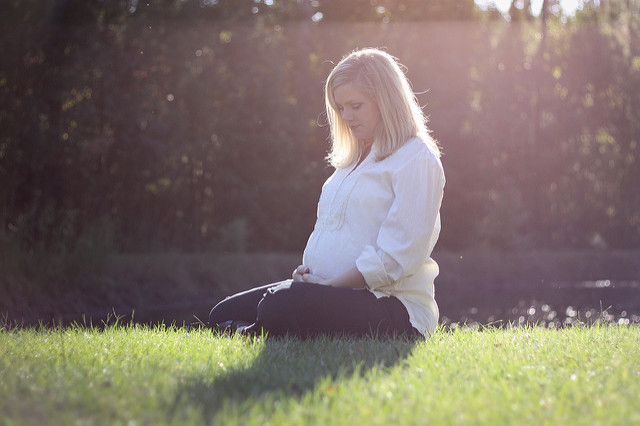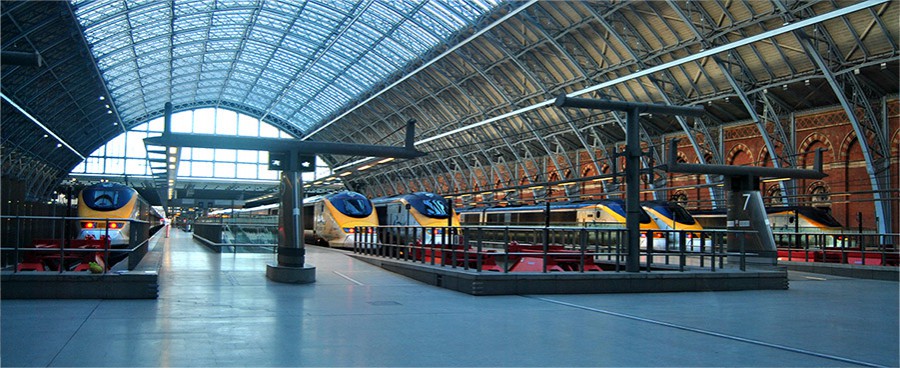We got our little one’s passport sorted and booked her first trip to Belgium to properly welcome her into the family! She was just under 3 months old and we headed off to Ghent, a city we are fairly familiar with. Like my article on travelling while pregnant, I found very little info on the internet about travelling with a very young baby (other than information specific to flying). Maybe most parents don’t have the same Belgium withdrawal symptoms that we do!
Our trip was actually really successful, despite me being really nervous beforehand. We had a great time, as did the little one (we assume… I mean she didn’t cry the entire time so that’s a start!)
Before I get into the swing of things, I just want to say we found it really simple to get our baby’s passport sorted, although we do find it funny that her baby photo will stay with her until she’s five! There’s a link to the government website for passport applications at the bottom of this article.
Luggage
Babies are pretty simple in terms of luggage- they need to poo, eat and sleep. Pack accordingly!
Essentials
Nappies and wipes are important, but just as easy to find in Belgium as they are in England! You should have an idea of how many you get through a day, so just pack what you need and don’t go overboard. Don’t forget any medication your baby needs and suncream if it’s going to be hot.
I breastfeed. Having mooched the internet a little I found that breastfeeding rates are pretty low in Belgium. Legally, women do have the right to breastfeed in public anytime, anywhere like we do in the UK. At the same time I wasn’t sure how I’d feel about breastfeeding in public in a foreign country where it wasn’t so common (and is it even that common in the UK?) so we packed all of the formula stuff, and I even ordered a special bottle warmer. As it turned out, I felt completely fine feeding her in public. It was an excuse to have a sit down in a bar every couple of hours! I got no odd looks or comments and even spotted another lady breastfeeding. So we didn’t even unpack the formula equipment from the car when it came to it. But I was glad we took our formula so we had the option.
Make sure you pack a lightweight pushchair- if you’re walking around on cobbled streets for a whole day you really don’t want to be lugging your big Silver Cross travel system around. We invested in a lie-flat stroller with a pull-down sunshade. It was great- not a hassle at all, easy to manoeuvre around and because it was lie-flat our newborn was comfortable and able to nap in it. She actually napped really well during the day as the cobbled streets jiggled her to sleep! If it’s going to be dry but not too hot a baby carrier or sling would also be good.
An extra tip- if you need a kettle for sterilising or making up formula, make sure your hotel room will have one! We stayed in the Ibis in Ghent, where we had stayed before. We had a feeling there hadn’t been a kettle and tripadvisor reviews confirmed that. So we did bring our own as we use it to sterilize her dummy. It’s one of those things you might not think of but could be really important and if you’re travelling in a car it doesn’t take up much of your space.
Clothing
With a baby, it’s easy to get through a few outfits a day with sickiness and poo and all sorts of other possibilities. Baby clothes are also unsurprisingly small so pack a couple of spare outfits, but remember that if you’re travelling to a city like we did there are lots of shops with baby clothes at reasonable prices, so there’s no need to overpack! (Also, what a cute momento for your baby’s first trip abroad). Keep in mind the weather… if you’re travelling from the UK it’s usually a similar temperature so pack accordingly. We travelled in late May and the predictions were warm but wet so we just packed lots of sleepsuits and vests, and then a couple of extra blankets. Easy, small and versatile. Suitable for daytime or nighttime. Lots of layering possibilities if needed.
Remember also how a little vomit can ruin not only your baby’s outfit but also your own, so pack an extra outfit for yourself too!
Just in case you do need to buy a baby outfit, be aware that the sizing can be confusing! It’s measured by the baby’s height in centimeters and goes up in 6s. Here’s a quick rough guide:
UK Size European Size
Newborn 50
0-3 months 56
3-6 months 62
6-9 months 68
9-12 months 74
12-18 months 80
18-24 months 86
2 years 92
Sleeping
We brought our baby’s Moses basket with us. Having the car with us, and it being her first trip away we wanted somewhere familiar for her to sleep in case she struggled. The hotel had put up a travel cot for us anyway but we chose not to use it. I was a bit nervous about a hotel travel cot and had visions of a dirty or unsafe rickety old cot… unlikely when you think about how serious the implications of anything less than perfect could be! In reality, we were really impressed by the cot we were provided with and have since used hotel supplied travel cots with no problems. We do bring her sleeping bag though so she at least has something that smells familiar to her. But for Ghent I needed the security knowing she had a familiar space to sleep in.
Accommodation
Belgian hotels are generally family friendly, and often have really nice family rooms. Having a central hotel is handy so you always have somewhere local to retreat to if baby needs some time out. The best options, we thought, are either a self-contained self catering place or a large anonymous chain hotel. The former is handy if you want to be able to put baby to bed and then sit up in a different room drinking, eating, chatting etc. We went for the latter which meant come baby’s bedtime around 7pm we were confined to the hotel room. We tended to buy a couple of beers from the local Carrefour Express or the hotel bar and drink them in the room while chatting and watching the TV (in our Ibis we had access to about 4 English speaking TV channels including BBC 1).
Travelling
I’ve already written about how to get to Belgium here, but when travelling with a baby there are a few extra things to consider. Things to consider:
- Continuous time in the carseat for the baby. Current guidelines are that a baby has a break from the carseat every two hours. We drove from Leicestershire to a Premier Inn half an hour away from the Channel Tunnel, stopped over the night and then took an early train over to France in the morning. That way she had a break and there were no pressures on us to get to the Tunnel by a certain time. I also got to breastfeed under the sea which was something I’d been excited to do! (and change a pooey nappy, which I was less excited about!)
- The law. A baby in a car must be in a child seat or child restraint. The only vehicle a baby doesn’t need to be in some sort of restraint is a taxi.
- Eurostar (as a foot passenger) have baby changing facilities on board, as well as family carriages with more tables and luggage space for pushchairs etc.
- If flying, remember that baby food and formula milk may not make it through security!
- Parking. Parent and child spaces are available in larger public car parks. Otherwise, car park spaces tend to be a little larger than in the UK. Most hotels are happy for you to pull up outside the front if that’s possible so you can get the baby out before parking up.
- Make sure you have a window shade, especially if it’s going to be hot.
- If you like to bring a lot of beer back and find your baby is taking up too much valuable car space, invest in a roof box. I’m partially joking, but we got offered one to borrow over whatsapp JUST AFTER we’d set off so it was too late. Carl was gutted!
Eating and drinking
Most restaurants and bars in Belgium are family friendly, especially in warm weather when you can sit outside. We managed to eat out every evening without any problems. The only thing we did differently was book a table for early evening instead of around 8 or 9pm. It’s important to know that traditionally Belgians don’t eat the evening meal until quite late compared to Brits, but a lot of restaurants in tourist destinations and cities are still open early enough for families with young children. Just check opening times if you want to eat in a particular restaurant and book if you need to.
Baby Facilities
Baby changing facilities in Belgium are much less common than in the UK. It would be worth googling- for example- “Ghent baby changing” if you’re going to Ghent so you can find out the location of some. We found one in our whole stay, although I’ll admit we weren’t looking as we had a central hotel and so just took her back to the room to change her. HEMA is a shop similar to Wilkinsons I suppose in terms of what they stock and they usually will have a disabled toilet with a pull down changing table. You can usually find a HEMA on the main shopping street of a city. They also sell cute baby clothes pretty cheaply as well as general baby supplies like nappies, wipes etc.
For peace of mind…
Because new parents are prone to panic, the following bits of info are good to know in case of an emergency:
- The generic emergency services telephone number in Belgium, as across Europe, is 112. There are always English speakers. There’s a link below to a map of all hospitals in Belgium.
- Emergency telephones for an S.O.S. line are installed every 2km along motorways.
- Medicines are generally not available from supermarkets, you have to go to a pharmacy. There are always plenty in cities.
Things to do
There’s plenty to do with a baby in Belgium. We mostly just walked, took in the beauty of the place, ate good food and drank good beer. You probably don’t want to be lugging baby up a Belfry, and might want to avoid a museum around feeding time… but generally babies don’t mind what they do so long as you smile and chatter to them.
Links
Federal Public Health, Safety and Environment Service website on breastfeeding
RAC website on driving in Belgium
Guide and online application form for UK child passport
Interractive map of hospitals in Belgium








